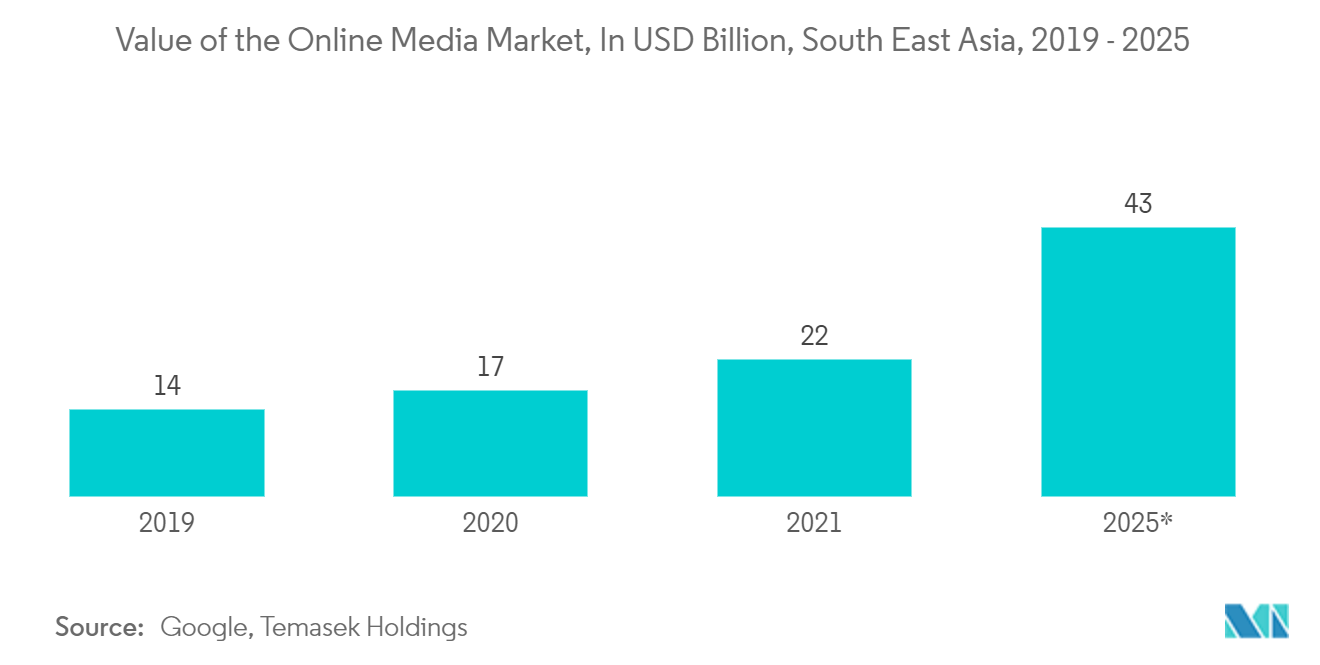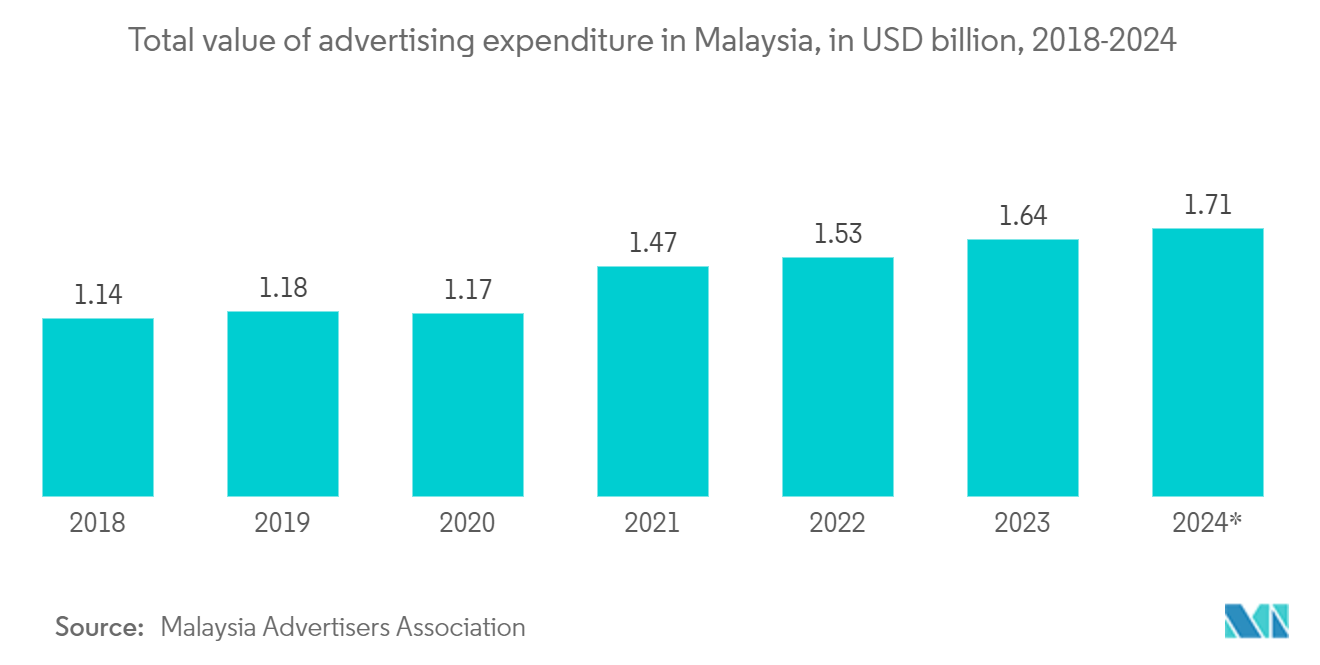Market Trends of South East Asia Advertising Industry
Transit Application is Expected to Hold the Highest Market Share
- The increasing demand for digital content and information relevant to travelers has led to interactive ads through different modes of advertisements, such as kiosks, billboards, and signboards, at the platform that accounts for a significant share of growth in transportation media revenues in the region.
- Due to this, there has been a shift in consumer behavior in terms of customer engagement across all modes of transportation, strategically building their brands in the customer mindset. This is expected to drive potential customers against traditional media over the coming years.
- Among various transit environments, airports have proven themselves to be an ideal environment for advertising, particularly for top-tier and luxury brands. Airports are under pressure to figure out ways to generate more revenue. Converting static displays, like posters, to digital displays allow airports to utilize the same space to sell to multiple advertisers instead of just one. That multiplies the amount of revenue exponentially. Additionally, airports can share the cost burden of upgrading to new advertising technologies by bringing in advertising partners.
- The initial setup cost of the digital screen is much higher than that of print signage, which is likely to pose a challenge for this segment in the market in the future.

Malaysia is Expected to Account for the Largest Market Share
- As Malaysia started to loosen pandemic restrictions, marketers are increasingly required to be agile and flexible to maximize their performance from OOH and DOOH spending. Malaysia introduced the Conditional Movement Control Order (CMCO) in 2020 to control the spread of COVID-19. The order prohibited various activities, including inter-state travel and mass gatherings. This move severely affected Malaysia's advertising industry. It resulted in shifting the focus of most brands' marketing to personal and at-home devices, where people spend more time.
- However, some companies in the country planned to get more out of this situation. For instance, Lalamove, a Malaysian on-demand delivery platform, assessed that the CMCO period was a good opportunity to invest in OOH and DOOH media. The company took advantage of cut-price rates on both OOH and DOOH sites.
- Digital outdoor advertising is undergoing significant transformation across the country, with spending expected to grow over the forecast period. The growth is majorly driven by a dense distribution of digital screens, a developed infrastructure, and connected technologies, which facilitate new opportunities for brands.
- The Malaysia Advertisers Association recognizes that OOH and DOOH are increasingly popular mediums for advertisers. However, there were a large number of technology providers with various reliable technologies with different measuring currencies, which became a challenge in measurement.
- Therefore, the Malaysia Advertisers Association agreed with the Media Specialists Association (MSA) to form a joint industry committee with the Outdoor Advertising Association of Malaysia (OAAM) to solve this problem. The formation of the Joint Industry Committee (JIC) and standardizing a single currency are expected to simplify the planning process by introducing simple measurements that media owners commonly utilize. The JIC is working on the framework to select a single measurement metric that multiple technology providers can offer.


